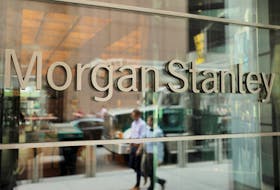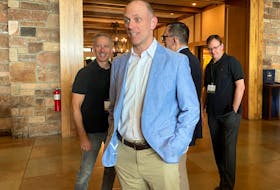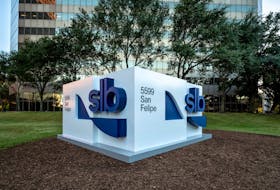
One of six children born to Archibald and Annie Schnare Emenau, Mahone Bay in 1913, the family later moved to Springfield, Annapolis Co. where his father was employed in the lumbering trade.
Following high school graduation, Harold was among the hundreds of workers who came to Brooklyn, Queens Co. in 1928 to construct Mersey Paper Company Ltd. As a 16-year old country boy who had never been away from home before and whose only goal in life was to follow the Harvest Excursion West, his job at the Mersey would be the only job he would ever hold.
Hundreds of workers were hired to build the mill and construct three power plants in Milton at the same time that would supply the plant. Looking for a place to live, workers were forced to throw up shacks skirting nearby woods. A thousand men alone were housed in company camps set up in the mill yard, which were torn down two months before the plant opened in order to lay pipes underground to the mill.
Workers were paid 30 cents an hour. Harold worked on a straight salary of $100 a month and counted himself fortunate to find a boarding place. The mill opened in the fall of 1929, two weeks before the start of the Great Depression. From 1930–37, workers and senior staff had to take a 10 per cent cut in wages. Once the economy improved Mersey Paper Company went on to become one of the highest paid employers in the province.
Harold’s first job was working out of the time office as a field checker giving workers a number of brass disks they turned in at the end of each shift.
In time he was introduced to Elizabeth Ford Doggett of White Point. The pretty slim young woman, who had taught school before going to the United States to study nursing recently graduated from the Salvation Army School of Nursing in Boston as a maternity nurse and was home visiting her family. They married in 1936, after Harold received a $10 raise in salary and built a small bungalow in Brooklyn.
Harold was promoted to the finishing room where he worked in sales and accounting and shipping and invoices. In 1943 he was made boss finisher; three years later he was promoted to supervisor of the finishing department, a position he would hold until his retirement in 1975.
Work was scarce in Brooklyn before the mill came. In the early days Queens Co. people seeking employment often had to go to the United States to work in factories and shops. Many men went to Gloucester and the fisheries and some became captains of their own vessels.
The village of Brooklyn is a beautiful seaside community, although several of its original Victorian homes, constructed by wealthy sea captains who made fortunes in the West Indies trade, have been torn down; there are still a number of gracious houses and an example of yesterday’s golden age of architecture.
When Harold first arrived in Brooklyn, he said the stores and businesses along the waterfront impressed him. There were no wharves and “stores were built on stilts out over the water.” Since ships couldn’t come in any closer then the village breakwater, supplies were loaded “on barges and ferried down the cove.”
Over the years the mill has contributed to the prosperity of Brooklyn and surrounding areas. Sons followed fathers, brothers and uncles into its various departments. Women would later play significant rolls in the mill’s day-to-day operations. The mill constructed new modern homes for its employees and their families as well as a new school.
After retirement Harold decided to build and sell homes on his property in Brooklyn. Always heavily involved in church and community affairs, he remembers a quote his minister, the Rev. Harry S. Bird gave at church years ago.
“The minister said ‘you can’t be good by doing no wrong. You’ve got to do something to be good.’ I never forgot that”.
The mill was sold to Bowater in the 1970s and renamed Bowater Mersey. Most recently the mill was sold to AbitibiBowater. Harold said the mill has the advantage of being an ice-free port and the handiest port to the Halifax container terminal.
The mill has a lot of newsprint going to the terminal, which he estimates “should be good for another 10 years.” The biggest danger is in the competition cut into the use of newspapers, “which is your lifeblood.” If newspapers can’t sell advertisements they don’t want newsprint, he said. “It’s as simple as that.”
An old plant, the mill has been modernized over the years. Harold said we don’t know if taking over the Brooklyn Energy Centre is producing enough power, or if it is cheaper than what Nova Scotia Power sells it for. The company must think so or they wouldn’t have bought it, he said. “I still think that the company went out on a limb when they let their boilers go and depended on that type of steam.”
With the passing of Elizabeth he said he lost a wonderful companion. A few months difference in their ages the couple were married 71 years. They have a son Dr. Paige Emenau and a daughter Gail Goodwin, seven grandchildren and seven great-grandchildren.








